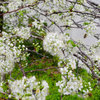Help Me Try Again With Butterfly Weed
perrisquirrel
9 years ago
Related Stories

FALL GARDENINGWhat Monarch Butterflies Taught Me About Garden Design
Thinking like a butterfly leads to fresh perspectives in the garden and in life
Full Story
EDIBLE GARDENSNatural Ways to Get Rid of Weeds in Your Garden
Use these techniques to help prevent the spread of weeds and to learn about your soil
Full Story
GARDENING GUIDESWhat’s in a Name? See 6 Wildflowers That Aren’t ‘Weeds’ at All
Dispel the stereotypes of weeds and try these wildlife-supporting native wildflowers in your garden
Full Story
DECORATING GUIDESHouzz Call: What Home Collections Help You Feel Like a Kid Again?
Whether candy dispensers bring back sweet memories or toys take you back to childhood, we'd like to see your youthful collections
Full Story
GARDENING GUIDESLet's Weed Out 4 Native Plant Myths
Plant wisely for a garden that supports pollinators and requires less work
Full Story
GARDENING GUIDES15 Ideas to Try in Your Garden This Year
These gardening stories were tops among Houzz readers. Which ideas might you try this year?
Full Story
EARTH DAYHow to Help Your Town’s Beneficial Birds and Bugs
Make a habitat using local materials to provide a home to the creatures that help our gardens
Full Story
GARDENING GUIDESGreat Design Plant: Bugle Weed, a Quick Ground Cover
It’s highly adaptable, suppresses weeds, reduces erosion and provide weeks of bright flowers. Just watch for invasiveness
Full Story
HOUZZ TOURSHouzz Tour: From Overgrown Weeds to Picturesque Farmhouse Expanse
This once-neglected 100-acre South Carolina site now features a lake, a wood-filled farmhouse and a far-reaching view
Full Story
GARDENING FOR BUTTERFLIESButterfly Gardening: Delight the Eyes With Living Sculptures
Surprise and thrill with a garden that attracts magical winged creatures, bringing color, movement and life
Full Story







carolb_w_fl_coastal_9b
ritaweeda
Related Professionals
Bridgetown Landscape Architects & Landscape Designers · Kyle Landscape Architects & Landscape Designers · Seabrook Landscape Architects & Landscape Designers · Blue Springs Landscape Contractors · Fuquay-Varina Landscape Contractors · McLean Landscape Contractors · Paso Robles Landscape Contractors · Rosemount Landscape Contractors · York Landscape Contractors · Austin Decks, Patios & Outdoor Enclosures · Aventura Decks, Patios & Outdoor Enclosures · Scotts Valley Decks, Patios & Outdoor Enclosures · Framingham Siding & Exteriors · Oregon City Siding & Exteriors · Spartanburg Siding & ExteriorsMichael AKA Leekle2ManE
theoj
Tom
carolb_w_fl_coastal_9b
Michael AKA Leekle2ManE
SusieQsie_Fla
Michael AKA Leekle2ManE
wisconsitom
Michael AKA Leekle2ManE
Tom
wisconsitom
Michael AKA Leekle2ManE
tomncath
SusieQsie_Fla